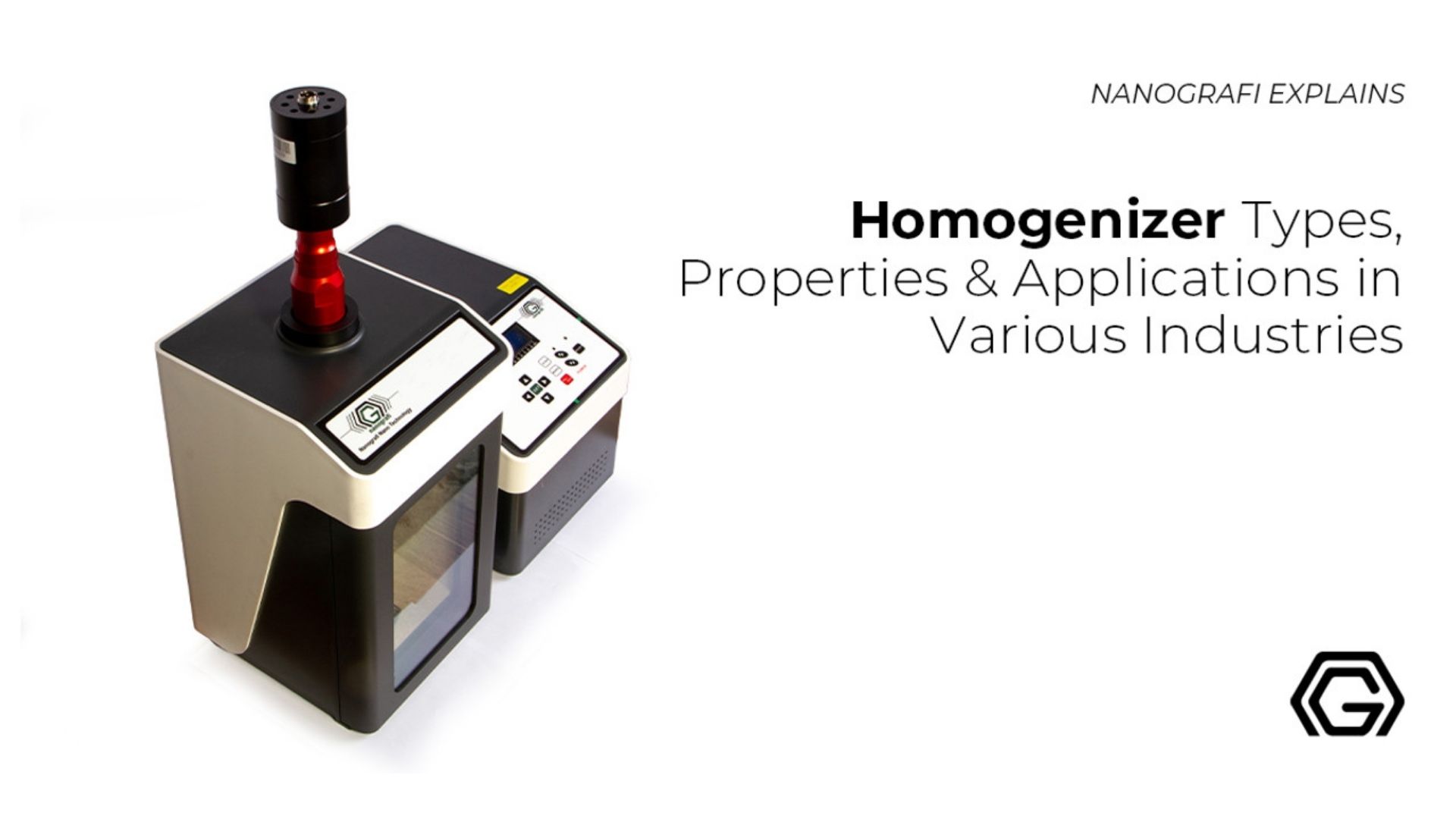Three Roll Mill and Ball Mill Properties & Uses Across Industries - Nanografi
Three roll mills are basically the types of machines that work by the shear forces and they possess three rolls which is why they are known as the three roll mills. On the other hand, ball mills are the ones that are a type of grinder or blending machine for using the dressing processes, paints, or any other laser processes.
Introduction
Three roll mills are basically the types of machines that work by the shear forces and they possess three rolls which is why they are known as the three roll mills. On the other hand, ball mills are the ones that are a type of grinder or blending machine for using the dressing processes, paints, or any other laser processes. All two of these exhibit excellent properties and therefore are capable of working in excellent ways which produce applications that are highly beneficial for industries all over the world. As Nanografi, our three roll mill uses three powerful rolls to create shear forces that will revolutionize your blending and grinding processes. Meanwhile, our ball mills offer unmatched precision and versatility for dressing, painting, and laser processing applications. Whether you're looking for quality, performance, or innovation, Nanografi's types of equipment can achieve unparalleled results with the ability to handle a wide range of applications across industries. Join the ranks of satisfied customers all over the world and experience the difference with Nanografi today.
Three Roll Mills
A triple-roll mill or a three-roll mill is a machine that uses the shear force that the three horizontally positioned rolls create while rotating in comparatively different speeds and opposite directions so that it can homogenize, disperse, refine, or mix the viscous materials that are fed into it.
In the 19th century, a huge amount of development was seen in the three-roll mill as it is the most successful of the roll mills' range. Five roll mills and single-roll mills are included in the range of successful roll mills. Single-roll mills function when the material passes between the roll and the fixed bar which presses against the roll. Four successively smaller in-running nips are incorporated by the five-roll mill. In comparison with the three-roll mill, the five-roll mill enables larger agglomerate usage as an input material’s part but it is more expensive and complicated than the three-roll mill.
Three Roll Mill Working Principle
Rotation of a three-roll mill’s three adjacent rolls (also known as apron roll, center roll, and feed roll) occurs at gradually higher speeds. Usually material is in the paste’s form and it is fed between the center roll and the feed roll. Most of the paste stays in the feed region initially because of the narrowing space between the rolls. Extremely high shear force is experienced by the part which makes it through the first in-running nip experiences because of the two rolls’ different rotation speeds. The material remaining on the center roll moves upon exiting through the second nip between the apron roll and the center roll, subjecting it to a higher shear force because of the apron roll's higher speed and a smaller gap between the center rolls and the feed typically. The processed material is then scraped off the apron roll by the knife blade and then the paste rolls down the apron roll. Dispersion can be maximized by repeating this milling cycle various times.
You can maintain and adjust the gaps between the rolls both hydraulically and mechanically. The distance of the gap is usually more than the size of the particle. The gap distance is lessened gradually in some of the operations for obtaining the dispersion’s desired level. Normally, the rollers are water-cooled internally.
Three Roll Mill Properties
Rolling is a process of forming metal in metalworking. In rolling, a metal stock passes through more or one pair of rolls, therefore imparting a required mechanical characteristic, uniform thickness, and lessening the thickness. Dough's rolling has a similar concept. Metal rolled temperature classifies rolling. The process is hot rolling if the metal's temperature is more than its recrystallization temperature, and it is a cold rolling process if the metal’s temperature is less than its temperature of recrystallization. As compared to the rest of the manufacturing process, more tonnage is processed by hot rolling in terms of usage. However, out of all the cold working processes, most of the tonnage is processed by the cold rolling processes.
Three Roll Mill Applications
It has been seen that there is a broad usage of three-roll mills in mixing foods, sealants, adhesives, coatings, pigments, dental composites, glass coatings, chemicals, pharmaceuticals, paints, graphite/carbon, plastisols, cosmetics, high-performance ceramics, electronic thick film inks, and mix printing inks. After their latest progress in technology, they are also being used for producing artificial plastics, soap, electronics, and cable covers. For low-volume production, laboratory work, and bench-top development work, small bench models are utilized. In order to fulfill pilot plants’ various needs of production to large volume productions, the larger bench and floor models are built.
This process has many advantages, the specific ones being that it allows the pastes of high-viscosity to be milled, along with the advantage that due to their high surface contact with the cooled rollers, the temperature is allowed to stay low no matter how high the amount of dispersion work being put in. However, its major disadvantage is that loss of volatiles is caused by the paste’s large open area on the rollers.
Use of Three Roll Mill in Laboratories
Three roll mills have become a staple in laboratory environments due to their ability to precisely control particle size and produce high-quality dispersions. These mills are widely used in industries such as cosmetics, pharmaceuticals, battery manufacturing and food, where they are used to produce products with a consistent texture and uniformity. In this part, the use of three roll mills in laboratory settings, and therefore, their applications in various industries will be discussed.
Innovative Production of Lithium-ion Batteries
In the production of LIB cells, there is a broad range of solutions for the steps of the vital process. They possess continuous twin-screw electrode slurry mixers and solutions to wet grind precursors and active materials. They have been designing innovative process solutions for increasing yields and reducing costs.
High-quality Printing Ink Manufacturing Solutions
Two market-leading, complete plant solutions, and cutting-edge mills are included in the printing ink manufacturing solutions. Each solution is designed for enhancing the quality of the product and lessening the costs of production in your pasty printing inks, liquid, and packaging.
Superior Paints and Coatings Production Solutions
Reliable manufacture is guaranteed high-quality coatings and paints by the bead mill solutions. With excellent efficiency, a product of the right quality can be formed from automotive to industrial and marine applications.
Quality Chemicals and Cosmetics Process Solutions
The quality of your product can be improved by the advanced process solutions in dispersing, mixing, and wet grinding cosmetics and chemicals while reducing waste. Effective and powerful solutions are offered by the equipment portfolio, which ranges from extremely pasty to liquid materials.
Superior Electronic Material Production Solutions
For the electronics industry, durable coatings of high quality according to the need can be created by the leading range of dispersing and wet grinding solutions, while aiding in telling how to respond to the increasing cost pressures and even-smaller innovation cycles.
To discover more, you can read Homogenizer Types, Properties & Applications in Various Industries.
Ball Mills
In order to be used in the selective laser sintering, ceramics, pyrotechnics, paints, and mineral dressing processes, the materials are blended or grind by a type of grinder, known as a ball mill. The working of the ball mills is based on the principle of attrition and impact. Impact reduces the size as the balls fall from the shell’s top.
The hollow cylindrical shell which rotates around its axis makes up a ball mill. The shell's axis can either be at a small angle to the horizontal or horizontal. Balls partially fill it. Balls are the grinding media and they can be made up of rubber, ceramic, stainless steel, or steel, namely, chrome steel. Abrasion-resistant materials like rubber or manganese steel usually line the cylindrical shell's inner surface. Less wear occurs in mills that are lined with rubber. The mill's length is almost equal to the mill's diameter.
There was an ancient idea behind the ball mill but after the steam power invention and the industrial revolution, it was clear that there is a need for an efficient ball the milling machine. It was utilized in 1870 for grinding the flint for pottery according to the reports.
An Overview of Ball Mill
It is a cylindrical device and a grinder type that is utilized for grinding materials, for instance, paints, ceramic raw materials, chemicals, and ores. They rotate around a horizontal axis. Stainless steel balls, flint pebbles, and ceramic balls are the different materials that are utilized as media. The material is reduced to a fine powder by an internal cascading effect. Industrial ball mills can continuously operate. It feeds at one end and discharges at the other end. Ball mills of medium to large size rotate mechanically on their axis. However, the small ones are made up of a cylindrical capped container that sits on two drive shafts (rotary motion is transmitted by using belts and pulleys). The same principle is used by a rock tumbler to operate.
There are usages of ball mills in manufacturing the black powder along with the usages in pyrotechnics too but ball mills can't be utilized for preparing some of the pyrotechnic mixtures like flash powder due to their sensitivity towards impact. Mixture particles can be ground by the high-quality ball mills to as small as the size of 5 nm, along with an increase in the reaction rates and surface area, making them potentially expensive.
The working of the grinding is based on the critical speed principle. After grinding the particles, steel balls rotates along the cylindrical device’s direction at a speed known as the critical speed, and then steel balls cause no further grinding. In mechanical alloying processes, ball mills are broadly utilized to grind and cold weld, forming alloys from the powders.
Ball Mill Properties
In order to grind the crushed materials, a key equipment piece is the ball mill. Ball mill is utilized broadly in producing powders like glass ceramics, fertilizer, refractory material, silicates, cement, etc., and it is also used for non-ferrous and ferrous metals’ ore dressing. Ball mills can be used for grinding dry or wet ores and other materials. According to their discharging material’s ways, overfall type and grate type are the two kinds of ball mills. Grinding media of various types are appropriate to be used in a ball mill as each material has its own set of particular advantages and characteristics.
Composition, hardness, density, and size are grinding media’s key characteristics.
- Composition: Special requirements are needed for numerous grinding applications.
- Hardness: In order to grind the material, the grinding media should be durable enough, but it should not be so tough that it doesn’t wear down the tumbler.
- Density: As compared to the material being ground, the media should be denser. If the media floats on the ground material's top, it becomes a problem.
- Size: If the media particles are small, the final product’s particle size will also be small, and vice versa. As compared to the material’s largest pieces to be ground, the grinding media particles should be considerably larger.
- Grinding media’s material and color should be considered if the finished product’s color holds importance.
- The grinding media is chosen for easing its separation from the finished product where low contamination holds significance (for instance, steel dust can be separated magnetically from non-ferrous products). If separation is not being done, then using media of the same material as the product being ground is an alternative.
- Some of the media like iron may form a reaction with the corrosive materials and because of that, flint grinding media, ceramic, and stainless steel are utilized when there is a presence of a corrosive substance during grinding.
Inert shield gas is used to fill the grinding chamber. Inert shield gas doesn’t cause a reaction with the material being ground, thus preventing oxidation or any kind of explosive reactions that can take place when the ambient air is inside the mill.
Ball Mill Applications in Various Industries
Due to their versatility and efficiency, ball mills are widely used in various industries such as cement, ceramics, mining, and pharmaceuticals, among others. In this part, we will explore the different applications of ball mills in various industries.
High-quality Chocolate Mass
Combined with know-how developed over many years has made the chocolate production process rather a simpler one. The systems allow producing unique recipes for high-quality chocolate products worldwide.
Chocolate Compound Production
The chocolate product can be made with compounds and fillings in a limitless variety. Cost-efficient and flexible production is given to you by our special-purpose production systems for forming chocolate treats of an astonishing variety.
Innovative Cocoa Processing Solutions
You must have complete control over efficiency, texture, and taste for getting to the chocolate mass or cocoa powder from your raw cocoa bean. Because of processing technology, you can get that, along with reliable customized solutions.
Fat Creams
Being an essential part of confectionery products, fat cream is utilized to fill pralines for delivering an exquisite taste. A different mouthfeel and an additional flavor are possessed by the biscuits with cream and wafers.
Conclusion
In conclusion, it's clear that three roll mills and ball mills are essential tools for a wide range of industries, offering unbeatable performance and producing high-quality products that thoroughly enhance the industries. And when it comes to finding the best equipment for your needs, Nanografi's state-of-the-art three roll mills and ball mills are designed to deliver precision, consistency, and efficiency, helping you achieve your goals and take your business to new heights. With our cutting-edge technology and expert support, you can trust Nanografi to provide the equipment you need to succeed.
To discover the latest articles in types of lab equipment, you can visit Blografi.
References
Ball mill - Wikipedia. (n.d.). Retrieved March 26, 2024, from https://en.wikipedia.org/wiki/Ball_mill
Effect of homogenizer pressure and temperature on physicochemical, oxidative stability, viscosity, droplet size, and sensory properties of Sesame vegetable cream - PMC. (n.d.). Retrieved March 26, 2024, from https://www.ncbi.nlm.nih.gov/pmc/articles/PMC6418465/
Homogenizer Types, Properties & Applications in Various Industries - Nanografi - Nanografi Nano Technology. (n.d.). Retrieved March 26, 2024, from https://nanografi.com/blog/homogenizer-types-properties-applications-in-various-industries-nanografi/
Mining ball mill-Baichy Machinery. (n.d.). Retrieved March 26, 2024, from https://www.baichy.com/Beneficiation/ballMill.html?gclid=Cj0KCQjw-LOEBhDCARIsABrC0Tk6DBHyFRaSkhuOzgk7YHSniIHam9HNdFcaBD882SYv7WE9WrECHJQaAmHAEALw_wcB
Three Roll Mill and The Potential Applications - Nanografi Nano Technology. (n.d.). Retrieved March 26, 2024, from https://nanografi.com/blog/three-roll-mill-and-the-potential-applications/
Three-Roll Mills | Grinding and Dispersing | Bühler Group. (n.d.). Retrieved March 26, 2024, from https://www.buhlergroup.com/global/en/product-families/three-roll-mills.html
Recent Posts
-
Advanced Materials for Unmanned Aerial Vehicle (UAV) Protection Against Laser
Consider a UAV on a critical mission, rendered inoperative by a sudden laser attack. With the increa …26th Jul 2024 -
Simulation and Modeling of Material Properties
Our world is composed of a dazzling array of materials, each with its own unique properties that dic …19th Jul 2024 -
Advanced Coatings for Superior Corrosion and Wear Resistance
Corrosion and wear pose significant challenges across various industries, leading to substantial eco …12th Jul 2024







